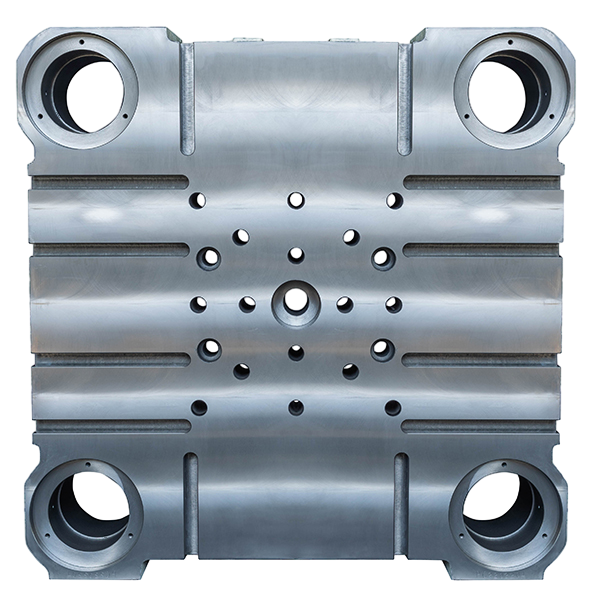Article Title: Platen Essential for Injection Molding - Powering Product Quality Up!
Introduction:
Injection molding is a very common manufacturing process used to produce many plastic products like toys, buckets etc. During this process, melted plastic pellets are forced into moulds to cool and harden in the shape that is desired. But of the most important is a component called platen, without which make no sense to talk about anything else in injection molding. This article will show you: What we mean by Platen The various platen advantages How one can use it effectively to improve your manufacturing process.
What is Platen?
Platen is the heavy metal plate or base of an injection moulding machine meant to hold a pressure during mould making process. Platens are usually fabricated from steel or aluminum and can be quite small or relatively large, depending on the size of the mold. The principal function of the locater ring is to offer a stable base for the mold and an uniform pressure, clamping force application during injection molding.
Benefits of using Platen in Injection Molding
Going with the bolster helps in providing number of benefits that greatly boosts up the performance and results from injection molding process. It offers consistency and predictability so that the force is evenly distributed across to your mold which means better quality items as well as precision of manufacture. Second, it helps make the switch and adjustment of molds easy and quick that decreases time saving for manufacturers. Third, the platen designed to be able to work with high temperature and pressure without any distortion or failing guarantees Safety an Reliability in production.
Platen Technologies Innovation
Like any other industrial process, injection molding technology is improving step by step with innovations and advancements. Introduction of additional materials, coatings and advanced designs for platens to help increase the performance capability life cycle of its platen as part recent advancements Some platen plates, for example, have a layer of diamond-like carbon (DLC) to lower wear and friction when the mold moves. Some of the latest models are made from composites, not only lighter and stronger but more corrosion-resistant than traditional metals.
Precautions For Using a Platen
And, sure enough platen is an essential molding element and at the same time it has with considerable safety risks. Manufacturers are required to bolt a platen tightly to the machine and mold, with all safety guards on the equipment. Platen should be used for workers to learn how operations and maintenance is done, as well as what protocols need followed in the event of an emergency.
How to Best Use the Pressure Plate in Injection Molding
Before introducing platen to the injection molding procedure, makers need to check all for clean and examine any hints of damage, rust or pollution. The platen must be correctly aligned with the mold as well as the clamping system of that machine. The platen must apply sufficient force and pressure to hold the mold securely in place, preventing deflection or warping during molding. After each cycle, the platen needs to be cleaned thoroughly and greased in order not to wear out before time.
Maintenance of the Platen
Like any other machine component, platen needs maintenance and service on a regular basis to maintain their longevity and performance. Note: The platen supplier must systematize meticulous maintenance scheduling and operations for all manufacturers to follow. This may include cleaning, lubrication of moving parts, inspection and replacement belts or other pieces that are worn, out in need of repair. It is very important to maintain impeccable records of use and maintenance made on the platen, as they can serve in future occurrences.
Platen press quality control and use
In the end, platen is what ensures that the quality and consistency of injection-molded products never take a hit. Once manufacturers notice any differences or irregularities in the clamping force and pressure, they must monitor their platen performances and measure each of them regularly. Allowing for the tweaking of platen parameters to produce according to a desired product specification is also required. In addition, the right platens size, material and design have to be matched with each mold application in order to maximize the molding process.
Conclusion:
Simply, platen is a basic part of the injection molding machine that offers support for functionality, consistency and safety. Uniform force distribution, ability to change over readily and long life make this item a very important one throughout the industry. Platen technology will continue to evolve through improved materials and coatings which are being developed to increase platen performance. Nevertheless, utilizing platen properly requires correct training, safety regulations to comply with and regular maintenance is in place so accidents do not happen as they would disrupt the quality production of items. Following these principles will help set manufacturers apart in the crowded world of injection molding.

 EN
EN
 AR
AR
 BG
BG
 HR
HR
 CS
CS
 DA
DA
 NL
NL
 FI
FI
 FR
FR
 DE
DE
 EL
EL
 IT
IT
 JA
JA
 KO
KO
 NO
NO
 PL
PL
 PT
PT
 RO
RO
 RU
RU
 ES
ES
 SV
SV
 TL
TL
 IW
IW
 ID
ID
 SR
SR
 SK
SK
 SL
SL
 VI
VI
 GL
GL
 HU
HU
 TH
TH
 TR
TR
 FA
FA
 GA
GA
 CY
CY
 IS
IS
 KA
KA
 LA
LA
 MI
MI

